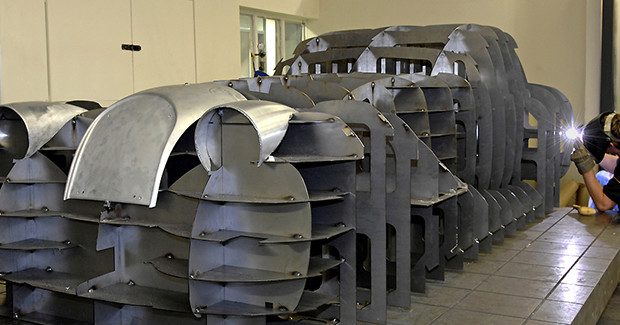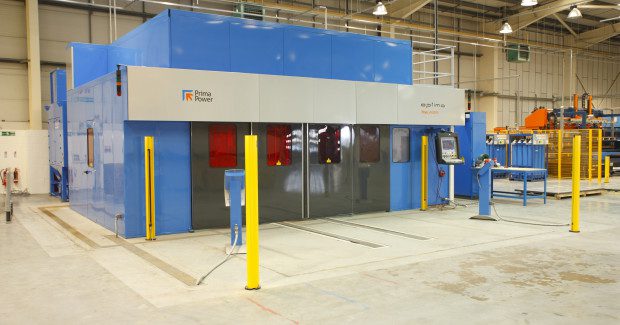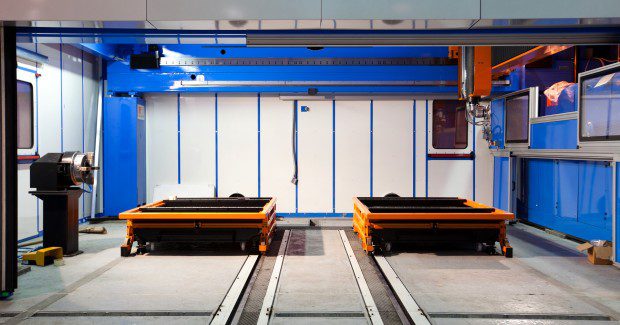Lasers Handle Cutting and Welding of Complex Parts
This shop welded the seam and cut 100 million holes in 12,100 torches – in six months. That’s not all. Check out the automotive parts they’re making.
Posted: March 1, 2016
The Premier Group (Coventry) Ltd. (Coventry, UK) has been producing niche production runs of panels and assemblies, as well as prototype work, for 20 years. They now operate ten different factories that succeed in fabricating difficult-to-form components in challenging materials. Their most famous success story is the Olympic Torch for the 2012 London Olympics, where they designed and built the prototype in four days, then manufactured 12,100 torches for the games, laser welding the seam down the length of each torch using their Optimo, and laser cutting 100 million holes in six months using their Syncrono laser, both machines from Prima Power UK Ltd. (Coventry, UK).
The bulk of Premier’s business is in the automotive sector, where they have had a close relationship with Jaguar Land Rover for around ten years. However, they also operate in many other sectors, including aerospace, rail, renewable energy, special industrial projects and specialist vehicles. The company works in partnership with their customers right from the design stage, advising on material, formability and tooling, using their skills and knowledge to produce high quality parts and assemblies at an economic cost.
Their special relationship with Prima Power, which extends back 13 years, makes a major contribution to this process. Prima Power supplies and services a complete range of sheet metal fabrication equipment that covers bending, punching, punch-shear, laser, combination and flexible manufacturing systems (FMS), with automation through automatic loading and unloading, transfer between stations and buffering that are highly important for modern productivity.
Premier added to their original Optimo 5-axis laser with a new model in 2012. The machine has a split cabin that adds flexibility by enabling it to cut the largest single panels or numerous smaller panels in one operation. “This equipment delivers completely new levels of accuracy,” says John Campton, a key account manager at Premier. “We used to work to 0.2 mm tolerances from the laser, but now we can work to 0.02 mm, which is what our OEM customers are demanding. This machine is five times faster, very strong and reliable and offers us pure versatility. We also get great after-sales service.”
Besides the Optimo, the shop uses a Syncrono 2-axis high speed laser with a Compact Server for material loading and unloading. They also added to their existing Rapido with the latest 5-axis Rapido Evoluzione2 in April 2015 and then installed two new Optimo lasers later in the year.
When collaborating with customers, Premier takes designs into their CATIA CAD system and checks actual part formability through AutoForm simulation software before working with the client to develop a solution. Then the shop designs and manufactures the necessary tooling. New material properties can be challenging, so they use their considerable experience in this field and also consult with the University of Warwick for more complex projects.
When manufacturing the panels for the Morgan 3 Wheeler – a new, re-engineered version of the classic vehicle that had previously not been built for 60 years – the shop used AutoForm simulation to arrive at the 2D shape for each blank, which was then laser cut, ready for forming. They then produced 1,500 sets of bodywork panels at the high speed of laser cutting to keep the costs down. This is why Morgan had come to Premier in the first place, because they could do the work at much lower cost than using conventional production tooling.
For Jaguar Land Rover, the shop produces thousands of different panels. For the new Jaguar XJ they manufactured every single panel for the underbody and superstructure VP stage, which demonstrates the shop’s capabilities in low volume production. Furthermore, they have the ability to produce quantities up to around 10,000 units. The crucial speed required for trimming these formed panels to meet on-time delivery is made possible on the Optimo and Rapido laser cutting systems. Other projects have included exhaust panels for A400M military transport aircraft, with quality and delivery benefiting from the very small heat affected zone (HAZ) and the high speed of laser cutting.
Premier also collaborates with companies such as Nilsson to produce prototype panels for limousines, ambulances and hearses that are based on the Volvo S80 and V70 models to help them take the vehicles through to production. The shop also works with Modine in developing heat exchanger systems for agricultural equipment.
All of these complex applications rely heavily on the Prima Power lasers. “For example, we worked closely in our technical relationship with Prima Power on laser welding to produce a 1.5 m weld seam in 7.5 seconds,” adds Campton. “Our shop first used that process on the Olympic torch and now we are examining other applications. We also have another project to produce angled holes. Their continual development program fits in with our comprehensive growth plans, and their after-sales service and machine reliability is excellent. As the majority of our panels are laser cut, the close rapport we have with them is essential for our business.”
Prima Power UK Ltd., Unit 1 Phoenix Park, Bayton Road, Coventry CV7 9QN, United Kingdom, 08-444-9962-41, [email protected], www.primapower.com.


















